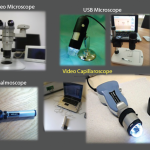This month’s coding corner offers an advanced scenario to truly test your coding skills. Upon first look, this coding corner might appear exactly like last month’s scenario, but there is one distinct missing item, and this missing component changes the level of coding for this encounter and will demonstrate the importance of documenting everything that is done during an office visit.
A 32-year-old female comes in for an initial office visit. Her primary care doctor is asking for the rheumatologist’s medical opinion. She has complaints of pain, numbness, and color changes in her fingers when she is exposed to cold. Additionally, her right distal index, fourth right, and left distal index fingers turn white then blue when exposed to cold temperatures. The patient also has pain and numbness in the digits.
These symptoms have been occurring for the past year but have increased in frequency over the past two months. The patient reports that her fingers return to normal color and the pain and numbness resolve after warming of hands. She has developed a “sore” on her distal left index finger. Her fingers sometimes feel stiff when she is exposed to the cold.
The patient denies any other musculoskeletal pain, stiffness, and joint swelling. She also denies fatigue, weight loss, recurrent fevers, rashes, chest pain, dyspnea, cough, palpitations, hypertension, unusual bruising, menorrhagia, dysuria or frequency, abdominal pain, vomiting, diarrhea, constipation, dysphagia, hematochezia, headaches, memory difficulties, insomnia, depression, or weakness. Finally, the patient has no known allergies.
Past Medical History: The patient has a history of type II diabetes mellitus. It is controlled with diet and oral hypoglycemic agents. She has no other comorbidities, and there were no surgeries or hospitalizations.
Family Medical History: There is significance for rheumatoid arthritis in her maternal grandmother and type II diabetes mellitus in her paternal grandfather and brother. There is no family history of Raynaud’s phenomenon, lupus, cancer, irritable bowel disorder, psoriasis, renal disease, or blood disorders.
Examination: The patient is alert and oriented, and her vital signs were normal. Her height is 5’7,” weight was 140 pounds, and her body mass index is 21.9. Her head, eyes, earn, nose, and throat exam is normal, and there was no lymphadenopathy. Additionally, the patient’s lungs are clear, and her heart has a regular rate and rhythm with no murmurs or friction rubs. She has good peripheral pulses, and her abdomen is soft, nontender, with no mass or hepatosplenomegaly.
There is no costovertebral angle tenderness on percussion. The patient’s skin has no rashes. She demonstrates mild cyanosis in distal digits of the right index and fourth fingers and the left index finger. There is a shallow ulcer on distal fingertip of the left index finger.
Musculoskeletal exam: The patient’s gait is normal, and she exhibit good muscle strength in her upper and lower extremities, both proximally and distally. All joints are unremarkable with free range of motion and no evidence of synovitis.
Diagnoses:
- Raynaud’s phenomenon
- Rule out other autoimmune connective tissue disease
Plan: The patient is counseled regarding the etiology, pathophysiology, symptoms, and prognosis for Raynaud’s phenomenon. The physician reviews measures to minimize Raynaud’s phenomenon and provides the patient with written information on Raynaud’s phenomenon. Laboratory studies are ordered to evaluate her for lupus or other autoimmune connective tissue disease. The patient is started on nifedipine extended release. The physician reviews actions and side effects of nifedipine with the patient. He then documents his findings in a written report and sends it to the primary care doctor.
How would you code this?

